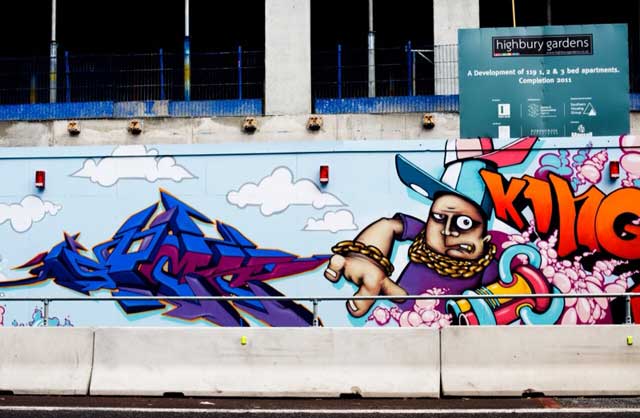Your support helps us to tell the story
From reproductive rights to climate change to Big Tech, The Independent is on the ground when the story is developing. Whether it's investigating the financials of Elon Musk's pro-Trump PAC or producing our latest documentary, 'The A Word', which shines a light on the American women fighting for reproductive rights, we know how important it is to parse out the facts from the messaging.
At such a critical moment in US history, we need reporters on the ground. Your donation allows us to keep sending journalists to speak to both sides of the story.
The Independent is trusted by Americans across the entire political spectrum. And unlike many other quality news outlets, we choose not to lock Americans out of our reporting and analysis with paywalls. We believe quality journalism should be available to everyone, paid for by those who can afford it.
Your support makes all the difference.Have you noticed how art on hoardings is everywhere these days? Whether it's pencil sketches by the Swedish artist Martin Karlsson on the Transforming Tate hoardings at the Tate Modern, or the Graffiti Kings collective making their commissioned mark on a new development of flats on the Holloway Road, or the Bankside Gallery's London Lives competition where the winning artists will have their work blown-up on a huge hoarding on Blackfriars Bridge for a year (from September) – the hoarding has become another artistic outlet worth taking notice of.
And it's not just in London that this is happening either. Regeneration schemes across the country are using art as a way of making areas visually appealing and in some cases, even cutting crime. In Stoke-on-Trent, Glassball Arts Projects have created Living Gallery, a digital street gallery with over 150 works of art on boarded-up windows and doors and are now working on designs for 500 metres of hoarding. Great Yarmouth is using the skills of the graffiti artist Silent Hobo to create a timeline with the history of the area in his bold Manga style on a hoarding around St George's chapel while they develop a new cultural quarter, due to open in 2012. And, in Birmingham, the photographer Adam Magyar has used Olympic finish-line technology for his Walking As One project on hoardings outside the new library, which show the diverse population of the city walking together.
As James Hurst, director of the illustration agency HigginsonHurst, who recently co-commissioned five revolving hoarding artworks for Busaba Eathai's first East London restaurant – including images by the photographer Jason Lowe, which will be up until Monday – says, "the argument about what is public space and where work can be created is always rife in the art scene. It's easy for companies to come in and reinforce their brand, but what's clever and brave is that here they gave an incredibly open brief. It doesn't look like an advert; it looks like art".

Join our commenting forum
Join thought-provoking conversations, follow other Independent readers and see their replies
Comments